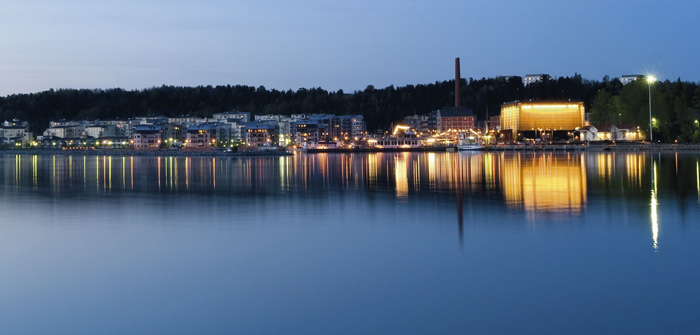ABOUT SIBELIUS HALL

About Sibelius Hall
The impressive wooden concert and congress centre rose on the Vesijärvi waterfront in spring 2000. Its architects, Hannu Tikka and Kimmo Lintula, explained that the main source of inspiration in the design was the Finnish forests. The forest always provided our ancestors with nourishment and raw materials, but it also involves mythical memories and scents – it has a relaxing essence. Another natural starting point in the design came from the industrial history of the site, the uncomplicated aesthetics of the old brick buildings, and the vicinity of water.
The Sibelius Hall complex, with an area of nearly 90,000 m3, is composed of four elements: the renovated Carpenter’s Factory, the Main Hall building, the Forest Hall (linking the previous elements together), and the Congress Wing (which is connected to the complex via a glass passage). Wood is the supporting material in all the new sections.
The Main Hall is an acoustic miracle, which creates unforgettable musical memories for concert goers. The auditorium seating and stage are situated in an oval-shaped ‘shoebox’ hall.
Flexibility in acoustics is achieved with a canopy, which can be raised and lowered above the stage, and via the echo chamber along the side walls, with 188 acoustic doors and woollen acoustic banners (2.7 km). The corrugated walls of the hall scatter reflecting sounds. A place was reserved for an organ behind the loft above the stage. The organ was finished and in place in 2007.
The sophisticated colouring of the Main Hall is a combination of graphite-grey, natural white, and the warm red of old string instruments. The floor is oil- and heat-treated smoke birch parquet. A glass façade covers the massive wall elements, with sandwich-structured laminated veneer lumber panels, filled with sand (18 cm thick insulation) and mineral wool. All of the Main Hall’s load bearing structures are made of glulam timber.

